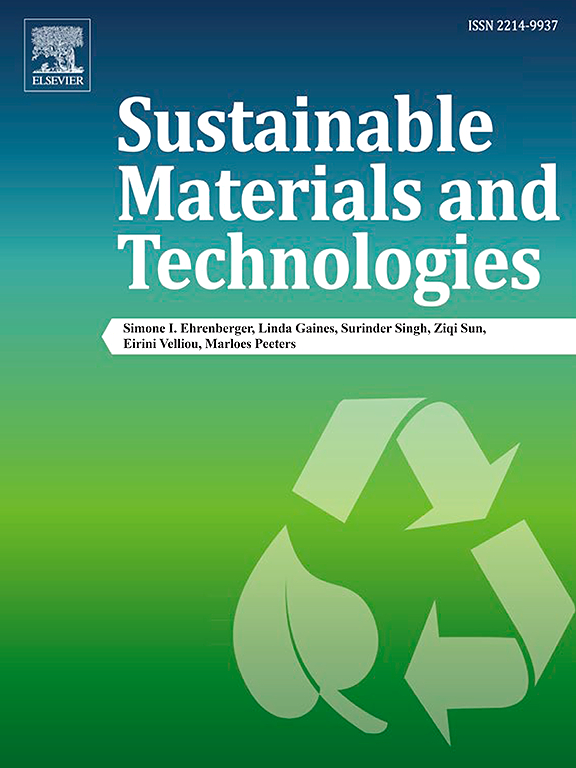3D-printable PVA-based inks filled with leather particle scraps for UV-assisted direct ink writing: Characterization and printability
IF 8.6
2区 工程技术
Q1 ENERGY & FUELS
引用次数: 0
Abstract
Despite its significant environmental impacts, leather remains a popular material due to its durability, aesthetics, and mechanical properties. Recycling leather scraps is gaining increasing attention to reduce waste, pollutants, and emissions from pristine raw materials in the tanning industry. Material Extrusion additive manufacturing represents a promising way to recycle leather byproducts as secondary raw materials for new applications. This paper investigates the characterization and printability of photo- and thermal-curable PVA-based inks for UV-assisted Direct Ink Writing filled with leather filler scraps from the tanning industry, i.e., leather shavings. As a cold extrusion process, Direct Ink Writing reduces energy consumption and maximizes the waste percentage content in new material formulations. The morphology and thermal properties of the leather filler were assessed before adding it to a novel cross-linkable PVA-based matrix, preparing inks containing up to 20 % wt. of leather scraps, leading to almost 40 % wt. after post-curing. Rheological tests showed a shear-thinning behavior of the formulations and a clear transition from solid-like to fluid-like behavior, followed by a quick recovery of the solid-like behavior, ensuring good printability, shape retention, and fidelity. UV crosslinking and post-curing led to robust polymer networks, reaching crosslinking degrees of ∼90 %. According to the mechanical tests, the PVA-leather scrap inks exhibited mechanical properties broadly similar to virgin leather materials, i.e., 170 MPa elastic modulus, 13 % elongation at break, and 6 MPa stress at break. Scanning Electron Microscopy revealed a preferential alignment of the leather filler along the extrusion direction, confirming the reinforcing effect of the scrap particles. These results demonstrate the suitability of these inks as alternatives for new tailored applications in the leather industry, reducing virgin material usage through additive manufacturing.

求助全文
约1分钟内获得全文
求助全文
来源期刊

Sustainable Materials and Technologies
Energy-Renewable Energy, Sustainability and the Environment
CiteScore
13.40
自引率
4.20%
发文量
158
审稿时长
45 days
期刊介绍:
Sustainable Materials and Technologies (SM&T), an international, cross-disciplinary, fully open access journal published by Elsevier, focuses on original full-length research articles and reviews. It covers applied or fundamental science of nano-, micro-, meso-, and macro-scale aspects of materials and technologies for sustainable development. SM&T gives special attention to contributions that bridge the knowledge gap between materials and system designs.
 求助内容:
求助内容: 应助结果提醒方式:
应助结果提醒方式:


